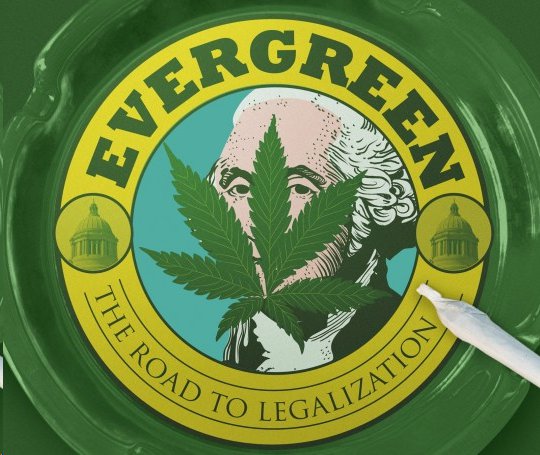The Road to the Legalization of Marijuana

When the issue of marijuana legalization is raised in this country, as with most political issues, it is oftentimes presumed to simply be a debate between two disparate positions. On one side there are the hardened drug warriors and on the other those who want it legalized. Rarely discussed are the disparate factions within the pro-legalization camp.
The documentary “Evergreen, The Road to Legalization” the directorial debut of Riley Morton demonstrates well how the debate surrounding Initiative-502, which passed in November 2012 legalizing marijuana in Washington State, brought such factionalism to a head. Indeed the staunchest opposition to the initiative came not from the traditional law and order conservative element but from a small but vocal cohort of medical marijuana activists, led by Steve Sarich who opposed how the legalization was implemented.
The dynamic is set right at the film’s outset. We are briefly treated to the same trite reefer madness arguments of the drug warriors, articulated most vocally by Seattle Police officer Pat Slack, but far more time is spent focusing on the grievances of Sarich and his compatriots surrounding several issues. The largest of the issues being the bill’s DUI provision, which they argue is unfair to medical marijuana users, many of whom suffer from chronic medical conditions and need the drug simply to function.

Take 17-year-old Darianne Cleary. In one of the film’s most emotional moments, Cleary, who suffers from MS, describes how smoking marijuana helped to eliminate her pain in a way that no other medication had and actually increased her focus while driving. “When I'm on marijuana and I drive, I'm more focused so I know what's going on around me. When I'm not medicated I drive fast, I don't care about using the blinkers and being safe because I just want to get where I'm going because I'm in pain.”
Interview snippets with those on both sides of the issue are quickly interspersed with each other to give the appearance of a live debate. The pace is quick and moves from the spring of 2012 when the ballot initiative was approved to the election itself. Midway through, we visit Hempfest (an annual Seattle extravaganza) transformed into a battleground between the two camps. In one particularly amusing scene, Sarich appears on a panel alongside Slack representing the “No” campaign in perhaps a poignant example of the old adage that “politics makes strange bedfellows.” Through the use of this scene, Morton shows great promise as a director.

He himself never appears on camera, and instead allows the main players on the issue to be the stars of the film. While this approach may lack the theatrics intrinsic to a Michael Moore film, it treats the issue more seriously, and gives audiences access to a genuinely new perspective, which they may not have previously considered, and brings to the general public a debate which in the past may simply have been seen as insider baseball within the marijuana legalization movement.
Author Bio:
Joseph Mulkerin is a contributing writer at Highbrow Magazine.






























































































































































































































































































































